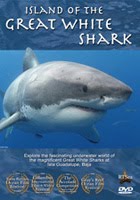 I am always interested in forms of communication to the general public - those teeming masses that need ecological and environmental enlightenment far more than the die-hard advocates that frequent conservation web sites and blogs like this one. So, this past Sunday I noticed a small insert in the Parade Magazine supplement that appears in many weekend newspapers - remember newspapers? Those archaic trumpeters of news and analysis that you used to ponder over, sipping your coffee while the Mrs. reminded you to take out the garbage? That was before news was replaced by abbreviated online sound bites or bloviating commentary?
I am always interested in forms of communication to the general public - those teeming masses that need ecological and environmental enlightenment far more than the die-hard advocates that frequent conservation web sites and blogs like this one. So, this past Sunday I noticed a small insert in the Parade Magazine supplement that appears in many weekend newspapers - remember newspapers? Those archaic trumpeters of news and analysis that you used to ponder over, sipping your coffee while the Mrs. reminded you to take out the garbage? That was before news was replaced by abbreviated online sound bites or bloviating commentary? Anyway . . . Parade ran a brief Q&A with Carter Roberts, president/CEO of World Wildlife Fund (WWF), about "Why Endangered Species Matter." It caught my eye because it addressed some very basic issues that the general public should consider, particularly when they hear a conservation advocate addressing a specific issue and might be thinking, "What's this got to do with me?" Here it is:
Anyway . . . Parade ran a brief Q&A with Carter Roberts, president/CEO of World Wildlife Fund (WWF), about "Why Endangered Species Matter." It caught my eye because it addressed some very basic issues that the general public should consider, particularly when they hear a conservation advocate addressing a specific issue and might be thinking, "What's this got to do with me?" Here it is:How do you justify spending millions to protect plants and animals when humans are struggling?
This is not an either/or choice. Our environment produces things that are fundamental to human life—and to saving human life. For example, many of the leading cancer drugs come from plants like the rosy periwinkle. If we only have species that coexist well with humans, we’ll be left with starlings, rats, pigeons, and a few dogs and cats.
Why does it matter if we lose a species?
There are incredible consequences when species disappear, consequences we can’t foresee. With the decline of predators such as wolves on the East Coast, the deer population exploded and we had an increase in Lyme disease.
Can we change the fates of endangered species?
We’ve reintroduced 120 species into the wild. When we succeed, as we did with the bald eagle, it gives the world hope. Right now, there are only a couple of thousand tigers left in the wild. But with the right protections, they can come back.
What are we doing right and wrong in terms of the environment?
The rush into biofuels has had unintended consequences, like the destruction of the tropical rain forest—20% of our CO emissions come from cutting down those trees. Our best path would be toward greater energy efficiency. The future of our planet rests on our ability to produce more with less.
— Lyric Wallwork Winik
And I confess, it's also available on Parade's online version. I just like putting my feet up on the coffee table and getting some ink smudges on my fingers.







No comments:
Post a Comment